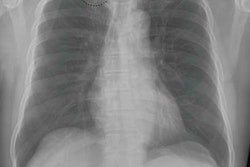Also, could digital variance angiography (DVA), which uses x-ray or fluoroscopy with contrast to visualize motion on image sequences during surgical procedures, provide higher signal-to-noise (S/N) ratio and better image quality than digital subtraction angiography (DSA)?
To find out more, Dr. Viktor Orias from the Heart and Vascular Center of Semmelweis University Budapest and colleagues studied 26 patients (mean age, 67.0 ± 8.1 years) undergoing carotid percutaneous transluminal angioplasty between January and June 2018. The researchers compared the S/N ratio of DSA and DVA images using a standard 100% iodinated contrast protocol and a low-dose 50% iodinated contrast protocol.
The visual evaluation of DVA or DSA images was performed by specialists using a five-grade rating scale.
With the 100% iodinated contrast protocol, image ratings from DVA (3.73 ± 0.06) were significantly greater than with DSA (3.52 ± 0.07) (p < 0.01). In addition, the researchers found no significant difference in image quality between DSA with 100% contrast and DVA with the lower 50% contrast protocol.
Interestingly, the researchers preferred DVA at 50% contrast over DSA at 100% contrast in 61% of the comparisons, with interrater agreement of 81%.
Based on the findings, Orias and colleagues determined that digital variance angiography does allow a substantial reduction of 50% in iodinated contrast in carotid x-ray angiography without affecting the quality and diagnostic value of angiograms.



















